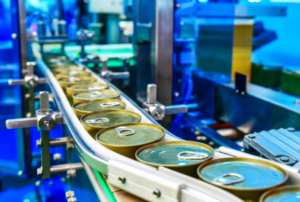High-Pressure Processing
Food technology has transformed our methods of manufacturing, handling, and eating. From new food products to changes in agricultural methods, technology is absolutely vital in guaranteeing food security and raising nutrition. With an eye on production and consumption, this paper investigates several food technological developments and their effects on society.
Food Production’s Evolution
Agriculture with Precision
In food production, precision agriculture marks a revolution. Farmers can maximize field-level management about crop cultivation by using GPS technology, sensors, and data analytics. Higher agricultural yields, less waste, and effective use of resources, including fertilizers and water, follow from this method.
Vertical Gardiculture
Another creative approach becoming popular is vertical farming. Growing crops in vertically stacked layers, often in controlled indoor environments, helps to reduce land consumption and enable year-round output by Reducing carbon emissions and transportation costs by vertical farming helps create sustainable food.
Biotechnology in Food Science
Genetic modification, among other aspects of biotechnology, has helped to create crops resistant to environmental conditions, diseases, and pests. Addressing food security issues, genetically modified organisms (GMOs) can increase agricultural output and nutritional value. GMOs do, however, also generate ethical and environmental issues that should be given much thought.
Food Processing Advancements
High-Pressure Processing (HPP)
Without preservatives, High-Pressure Processing (HPP) employs high pressure to inactivate microorganisms and extend the shelf life of food goods. Fresh and lightly processed items are ideal choices for HPP since it preserve the sensory traits and nutritional value of meals.
3D Food Printing
Emerging technology known as 3D food printing lets food products with particular shapes, textures, and nutritional profiles be created customistically. Personalized nutrition is one area where this technology finds use since food may be customized to fit particular dietary requirements and tastes.
Cultivated Meats Based on Plants
A major leap forward in food technology is the creation of cultured and plant-based meats. Using components taken from plants, plant-based meats resemble animal meat in taste and texture. Conversely, cultivated meats are created in a lab setting by growing animal cells. Both substitutes present ethical and environmentally friendly choices for meat intake.
Food Consumption Innovations
Modern Kitchens and Appliances
Smart appliances and kitchens are changing our cooking and consumption of food. Remote control of devices, including smart ovens, refrigerators, and cooktops, allows one to program them to precisely create meals. These developments lower food waste, improve convenience, and encourage better eating patterns.
Food Distribution and Meal Kits
Meal kits and food delivery companies’ emergence have fundamentally altered consumption trends. Companies like Uber Eats, DoorDash, and Blue Apron provide customers the ease of having meals delivered right to their house or pre-portioned materials for home cooking. These services give access to a range of cuisines and fit hectic lives.
Blockchain for Food Chain Distribution
Blockchain technology is raising food supply chain traceability and openness. Blockchain guarantees the authenticity and safety of food goods by offering a safe and unchangeable record of activities. By following the source of their food and confirming its quality, consumers help to build confidence in the food chain.
Artificial intelligence’s function
AI for Food Safety
Food safety is under improvement using artificial intelligence (AI). More precisely and faster than conventional techniques, artificial intelligence algorithms can identify toxins and bacteria in food products. Reducing the danger of foodborne diseases, predictive analytics also help in spotting possible food safety concerns before they start.
Artificial intelligence in customized nutrition
By means of analysis of individual health data, food choices, and nutritional requirements, AI-powered applications are providing personalized nutrition. These programs can suggest nutritional supplements and tailored meal plans, therefore enabling people to reach their health targets and avoid chronic diseases.
Sustainability and Environmental Effects
Cut Food Waste
Food technology is innovating to solve the worldwide food waste problem. Food products’ shelf life is extended and waste is lowered by advanced packaging solutions, including edible and biodegradable packaging. Apps like Too Good To Go can link users with reduced surplus food from supermarkets and restaurants.
Eco-friendly Packaging
Reducing the environmental influence of food consumption depends on sustainable packaging. In this field, innovations include the creation of compostable materials and plant-based polymers from renewable resources, therefore transforming packaging materials. These fixes reduce carbon footprints and cut plastic garbage.
Obstacles and Future Approaches
Regulatory and Ethical Concerns
Food technology presents ethical and legal problems, even if it has many advantages. To safeguard consumers and the environment, issues such the safety of genetically modified organisms, the effects of new manufacturing techniques, and food product labeling call for thorough control and monitoring.
Prominent developments in nutritional science
Future developments in food technology will be driven by ongoing nutritional scientific advances. New food products and tailored nutrition solutions developed from research on the health advantages of different nutrients and dietary patterns will help to improve health outcomes by means of improving these factors.
Technological Integration in Underdeveloped Areas
Advanced food technologies integration in underdeveloped areas offers both possibilities and problems. These technologies demand infrastructure and training, even as they can improve food security and nutrition. Global food security depends on fair distribution of these innovations.
In summary
Food technology is revolutionizing our methods of food production, processing, and consumption. Precision agriculture, vertical farming, and biotechnology are advancing food production sustainability and efficiency. Food processing and consumption advances such HPP, 3D food printing, smart kitchens, and tailored nutrition are improving the quality and convenience of our meals. Although these technologies have great advantages, successful application depends on addressing ethical, legal, and environmental problems. Future food production and consumption seem bright as we keep researching and developing new food technology that could help solve world food security and nutrition problems.
Including these technologies into our food systems will help to build a more sustainable, effective, and healthy future for consumption and production of food. The issues of feeding a rising population while guaranteeing the well-being of our planet and its occupants will depend much on the ongoing development in food technology.
